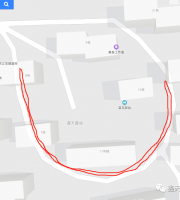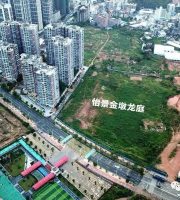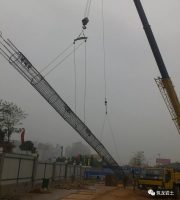For small cracks that have no impact on the bearing capacity of structural members, the cracks can be washed and repaired with crack resistant mortar.
2.
4.
The concrete protective layer is not vibrated tightly, or the wood formwork is not wet enough, the concrete surface has too much water loss, etc., and the concrete lacks edges and corners during formwork removal.
During concrete pouring and vibration.
Generally, the free falling height of concrete shall not exceed 2m.
When the reinforcement is dense, select appropriate stones.
All parts of the remaining mortar shall be chiseled to the dense part of the concrete, washed with clean water and fully wetted, and then repaired and compacted with high-strength repair material and carefully maintained.
3.
If it is a large honeycomb, first remove the loose gravel and prominent particles to form a bell mouth as large as possible, then wet and wash it with clean water, and then tamp it with a higher grade of micro expansive fine aggregate concrete for careful maintenance..
3.1 cause analysis: 1.
Gravel and river sand are poorly graded, which is not convenient for cement mortar to fully wrap and form honeycomb, etc.
6.
The floor slab and beam are not cleaned in place before concrete pouring, or cleaning openings are set in the beam, and the saws, wood blocks and other small wastes on the floor slab are stored in the beam and cannot be cleaned out.
In order to ensure the good combination of upper and lower concrete, the vibrator shall be inserted into the lower concrete for 5cm.
The thickness of the pouring layer shall not exceed 1.25 times the length of the active part of the vibrator.
1.2 preventive measures: 1.
When the concrete is vibrated, the vibrator strikes the reinforcement and displaces the reinforcement.
The surface of construction joint was not carefully treated before concrete pouring; During pouring, the vibration is not dense enough.
In case of large stones stuck on the reinforcement, the concrete cement slurry cannot fill around the reinforcement.
The thickness of the floor slab is not enough, or the reinforcement is not fixed firmly when pouring concrete.
When the structural section is small and the reinforcement is dense, fine aggregate concrete can be used for pouring.
If the exposed reinforcement is deep, remove and roughen the weak concrete, wash it clean and wet, tamp it with high-grade meter stone concrete and maintain it carefully.
2.1 cause analysis: 1.
4.
In order to ensure the thickness of the concrete protective layer, pay attention to fixing the cushion block.
In order to control the thickness, the elevation control line must be made before concrete pouring; At the same time, during concrete pouring, special reinforcement watchers shall be arranged to immediately deal with the displacement and floating of reinforcement, so as to prevent reinforcement exposure from happening again.
Inaccurate concrete mix proportion, wrong measurement of sand, stone and cement materials, or inaccurate water addition, resulting in less mortar and more stones.
Concrete segregation due to improper mix proportion, lack of slurry at pouring and tamping parts or serious slurry leakage of formwork.
4.
2.
4.
The chiseling and cutting of cracks and slag inclusion shall be snapped, and the repair shall be square, straight and beautiful.
3.
The maximum particle size of stone shall not exceed 1 / 4 of the minimum size of structural section, and shall not be greater than 3 / 4 of the clear distance of reinforcement.
1、 Construction joints (beams and floors) are mixed with slag and wet pump mortar, and the concrete at the construction joints is poorly combined, with gaps or sundries, resulting in poor structural integrity; The moistening pump mortar has no strength on the floor, which causes great potential safety hazards to the structure.
If the crack is large and deep, the concrete surface near the crack and interlayer shall be roughened, the sundries and soft concrete in the interlayer shall be removed, washed with clean water, fully wetted, and then poured and tamped with high-grade fine aggregate concrete and carefully maintained.
1.1 cause analysis: 1.
Before pouring concrete, check whether the position of reinforcement and the thickness of protective layer are accurate.
In case of exceeding, measures such as tumbling barrel and chute shall be taken for blanking.
3、 The concrete honeycomb concrete is locally loose, with less mortar and more gravel, and there are gaps between the gravel, forming honeycomb holes.
When pouring the top slab concrete, the moistening pump mortar was not properly treated, resulting in mortar scattering on the floor slab.
Before pouring concrete on the hardened concrete surface, remove the surface cement film, loose stones or soft concrete layer, fully wet and wash it, and remove the ponding left on the concrete surface.
4.
In the process of structural construction, the project department often finds quality problems in varying degrees in the construction site, including slag inclusion in the construction joint (floor slab), exposed reinforcement, concrete honeycomb, pitted surface, missing edges and corners, floor cracks, uneven door and window openings, etc.
Before pouring, the construction joint should be paved with cement paste or a layer of cement mortar with the same proportion as the concrete without stones, or the method of brushing interface agent can be adopted.
2.
The concrete mixing time is short, the mixing is not uniform, the workability of the concrete is poor, and the vibration is not dense.
When pouring concrete, often observe the formwork, support, joint plugging, etc.
The formwork removal time shall be determined according to the test results of the test block to prevent premature formwork removal.
2.3 treatment measures: clean the concrete residue and rust on the exposed reinforcement, wash it with water, and then wipe it with high-strength repair material.
When pouring floor concrete, the pouring thickness of concrete shall be strictly controlled.
Under the action of concrete, the reinforcement floats upward, and the back of the concrete is exposed after solidification and shrinkage.
The pores of the formwork are not blocked well, or the formwork is not firmly supported, and the formwork is displaced during concrete vibration, resulting in serious slurry leakage or wall rotten roots, forming honeycombs.
High pressure wind blowing can be used for construction in winter.
Before pouring concrete, fully wet the wood formwork with clean water and carefully block the gap.
After all cleaning, close the opening of the whole strip, plaster cement slurry or stone reducing concrete mortar, and then pour concrete.
During concrete vibration, the vibration time of each point must be mastered.
At places with dense reinforcement, measures shall be taken in advance to leave space for vibrator vibration.
The concrete of the protective layer shall be vibrated and compacted.
The formwork shall be opened along the construction joint to facilitate the cleaning of sundries and flushing.
The moistening pump mortar shall be hoisted downstairs with a special ash bucket, and it is not allowed to be directly poured into the floor.
3.2 preventive measures: strengthen the quality inspection of commercial concrete batching, and exit the site if the workability of concrete does not meet the requirements.
If the formwork moves, stop pouring immediately and repair it well before the initial setting of concrete.
The concrete shall be vibrated and tamped in layers.
The section of reinforced concrete structure is small and the reinforcement is too dense.
5.
It is summarized as follows for your reference.
In order to prevent the displacement of the reinforcement, it is strictly prohibited to strike the reinforcement with the vibrator.
3.
Excessive concrete blanking at one time, no segmental and layered pouring, improper vibration or poor coordination between blanking and vibration, and blanking again without timely vibration, resulting in honeycomb due to missing vibration.
6.
2.
The wet pump mortar left on the floor surface shall be carefully checked and recorded by a specially assigned person.
3.
2.
If the reinforcement is bent or tripped, it shall be straightened in time, buckled and tied.
2.2 preventive measures: 1.
When tamping the concrete mixture, the moving distance of the immersion vibrator shall not be greater than 1.5 times of its action radius; For fine aggregate concrete mixture, it shall not be greater than 1 time of its action radius.
The reinforcement cushion block is displaced or too few or even missing, and the reinforcement is close to the formwork.
1.3 treatment measures: 1.
When the free falling height of concrete exceeds 2m, tumbling barrel or chute shall be used for blanking.
3.3 treatment measures: if there are small honeycombs in the concrete, wash them with clean water first, and then repair them with stone removing concrete slurry.
The distance from the vibrator to the formwork shall not be greater than 1 / 2 of the effective action radius of the vibrator.
In view of the quality problems on site, the project department further analyzes the causes and actively takes preventive measures and treatment methods.
5.
Do not step on the reinforcement during operation.
3.
During layered and segmented construction, wood blocks, sawdust and other sundries are often accumulated on the concrete surface during the construction pause, which are not carefully inspected and cleaned, and mixed into the concrete when pouring concrete again.
2、 The main reinforcement, negative reinforcement or stirrup in the reinforced concrete structure with exposed reinforcement are exposed on the concrete surface.
5.
The concrete is not poured according to the operating procedures and the blanking is improper, so that the stones are concentrated and the cement slurry cannot be vibrated, resulting in concrete segregation.
2.
The appropriate vibration phenomenon is that the concrete will no longer sink significantly and no bubbles will appear.
6.




